Nervines Explained
[1, 2, 3, 5]
Nervine is an herbal action term used to describe the medicinal effect a plant has on our bodies. These herbs have a pronounced affect our nervous system and are used tonically for strength and support, or to help with fatigue, insomnia, pain, anxiety, and depression. There are three main categories of nervines: tonic, stimulating, and relaxing [3, 5]. Tonic herbs nourish and restore, stimulating herbs excite and energize, and relaxing herbs calm and soothe [3, 5].
Nervine is a general term, so it will be helpful to learn the more specific actions in this group. Some of these include hypnotic (induce or sustain deep sleep), anxiolytic (reduces anxiety), antidepressant (eases depression and sadness), and analgesics (relives pain) [1, 2]. Many nervines are also antispasmodic (eases muscle spasms or cramping), so they can be helpful with tightness or tension in the body [3, 5].

Characteristics
[5]
Definition: Nervines affect the nervous system by strengthening and restoring nervous system functions, stimulating nerve activity, or soothing the body and mind [5].
Indications for use: Sleep issues, anxiety, depression, pain, nourishment, fatigue, tension
5 Common Nervines
1. Oats
Avena sativa
[1, 4]
- Oatstraw Energetics: Fairly neutral
- Oatstraw Preparations: Infusion, vinegar, broth
- Oatstraw Actions: Nutritive tonic and mild nervine
- Milky Oat Energetics: Fairly Neutral
- Milky Oat Preparations: Fresh tincture, fresh vinegar
- Milky Oat Actions: Restorative nervine and anxiolytic
- Oat Seed Energetics: Slightly warming and moistening
- Oat Seed Preparation: Food grain, poultice, soak
- Oat Seed Actions: Demulcent, emollient, anti-inflammatory
Avena sativa is part of the grass family (Poaceae) and the entire plant (stem, leaves, and seed) is referred to as oatstraw. The immature seed, called milky oats, are best tinctured fresh. The oatstraw is highly nutritive and good for infusions and vinegars. The oatstraw and milky oats are nourishing nervine tonics used to strengthen and restore the nervous system.
Make an oatstraw infusion using 2 tsp. dried ariel parts and 8 oz. boiling water. Let steep for at least 10 minutes, strain and serve. The infusion may be taken up to 3 times per day.
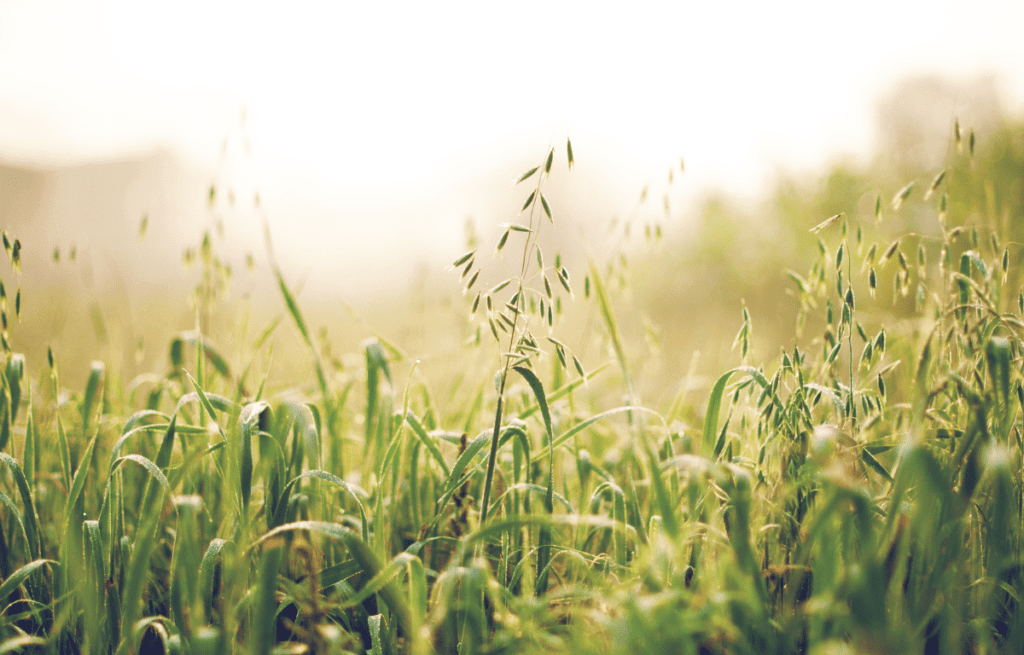
2. Basil
Ocimum basilicum
[1, 2]
- Energetics: Slightly warming and drying
- Parts Used: Leaves and flowers
- Preparations: Food, infusion, tincture, infused oil, infused vinegar
- Actions: Nervine, mild sedative, anti-spasmodic, carminative, galactagogue
Basil is part of the mint family (lamiaceae) and is native to Africa and Asia. There are many varieties and hybrids of basil with different scents, colors, and flavors. Sweet basil, O. basilicum, can help to alleviate fatigue, mental exhaustion, and nervous irritability [1, 5].
Not safe in large doses during pregnancy.
Make a basil infusion using 1-2 tsp. dried leaves and flowers with 8 oz. boiling water. Let steep for at least 10 minutes, strain and serve. The infusion may be taken up to 3 times per day.
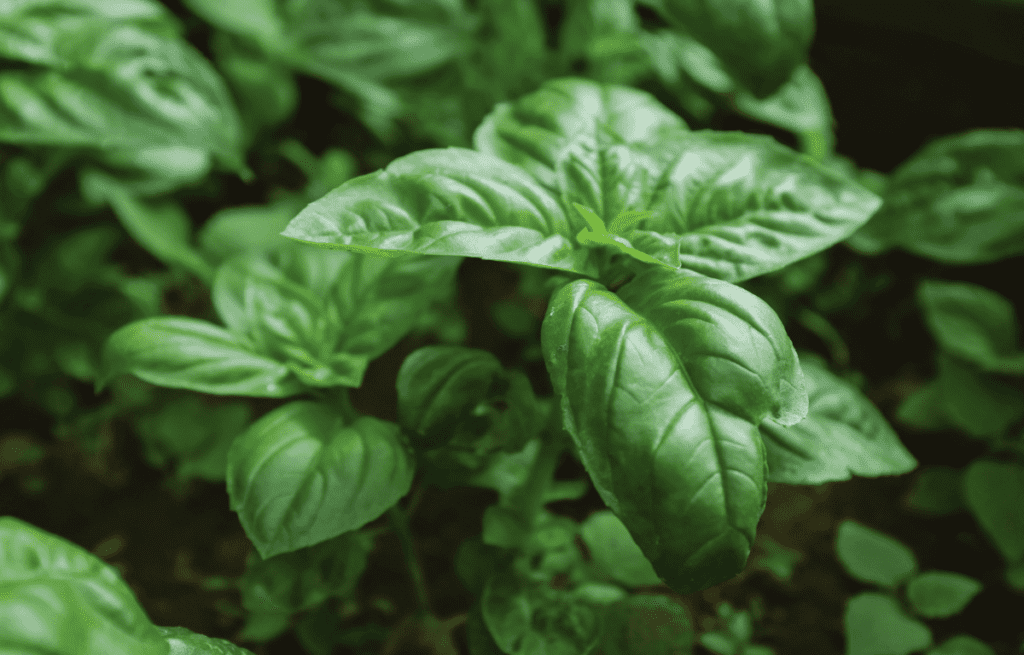
3. California Poppy
Eschscholzia californica
[4, 7]
- Energetics: Cooling and drying
- Parts Used: Aerial parts in flower, sometimes roots
- Preparations: Tincture, infusion, honey
- Actions: Nervine, sedative, antispasmodic, analgesic, anxiolytic, antidepressant
Join Our Newsletter
Sign up for our monthly newsletter to get easy gardening tips, seasonal to-dos, and herbal recipes delivered right to your inbox.
Thank you!
Check your email to confirm your subscription.
California poppy is native to the western United States and is part of the poppy family (Papaveraceae). There are several species in the Eschscholzia genus and the two we use most often as medicine are E. californica and E. mexicana. California poppy acts as an analgesic in high doses, and anxiolytic in low doses [7]. It is considered generally safe for children and elders.
Make a fresh California poppy tincture using (1:2 95%). Take 1–2 mL up to three times a day. For higher doses, take up to 5 mL acutely.
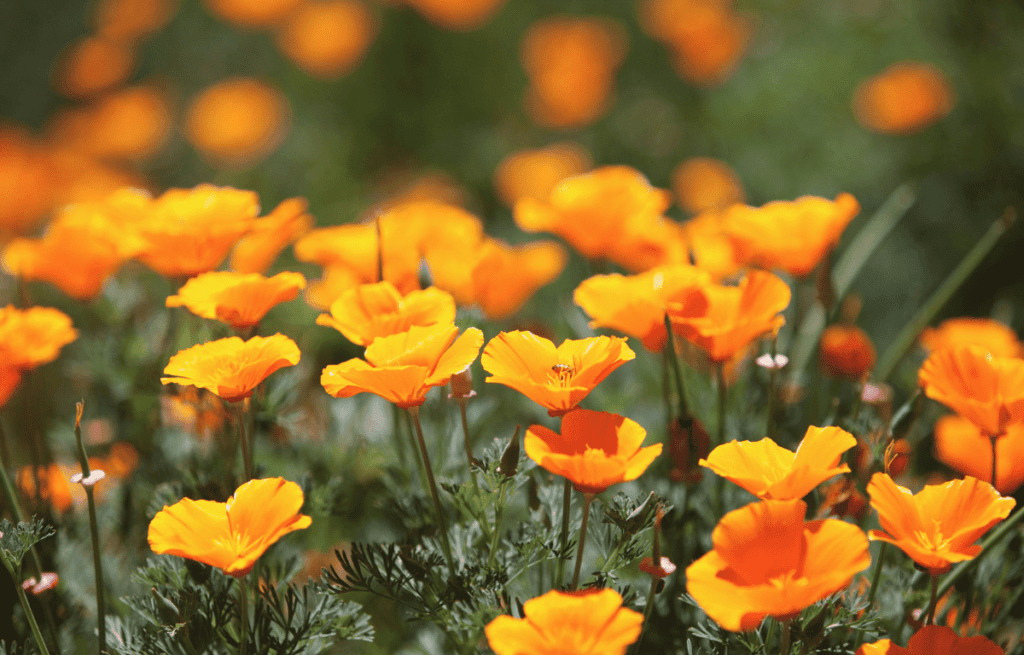
4. Chamomile
Matricaria recutita
[3, 4]
- Energetics: Slightly cooling, slightly drying
- Parts Used: Flowers
- Preparations: Infusion, tincture, infused oil, compress, inhalation
- Actions: Antispasmodic, anti-inflammatory, antimicrobial, carminative, diaphoretic, emmenagogue, bitter, nervine
Chamomile is part of the daisy family (Asteraceae), and is native to Europe. It is a highly revered and versatile plant. It can be used to promote relaxation, ease an overstimulated mind, and relieve insomnia.
May not be safe during pregnancy.
Make a chamomile infusion using 1-2 tsp. dried flowers with 8 oz. boiling water. Let steep for at least 10 minutes, strain and serve. The infusion may be taken up to 3 times per day.
Try a cup of Rest and Relax Tea after a stressful day.
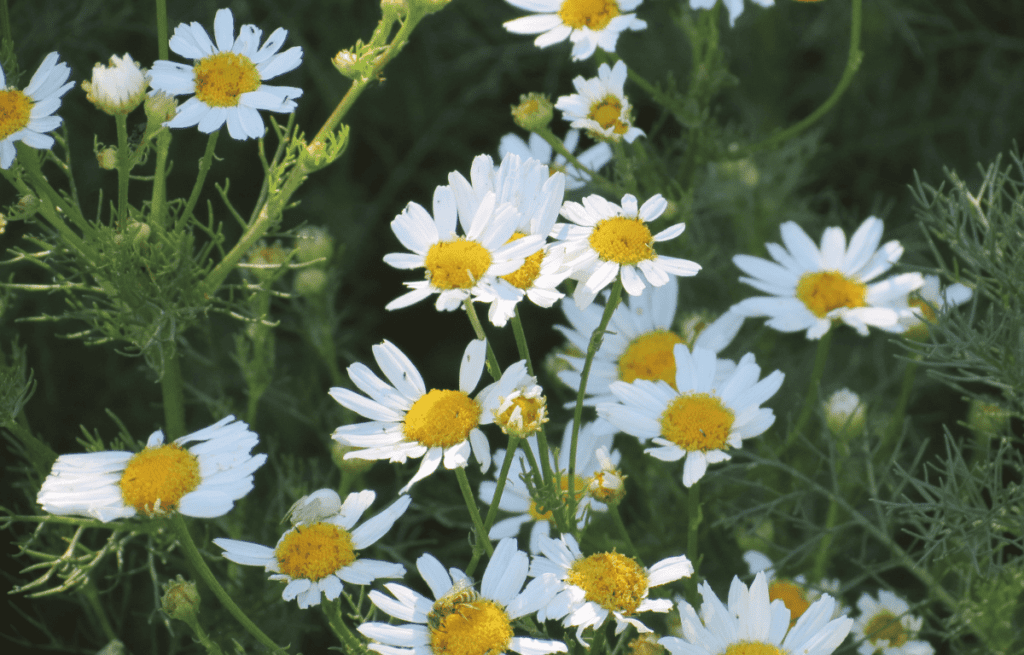
5. Passionflower
Passiflora incarnata
[, 2, 4, 6]
- Energetics: Fairly neutral, cooling, relaxing
- Parts Used: Leaf and flower
- Preparations: Infusion, tincture, poultice, and compress
- Actions: Analgesic, hypnotic, nervine, antidepressant, anxiolytic, and antispasmodic
Passiflora incarnata is a flowering vine native to the Americas and is part of the Passifloraceae family [6]. Passionflower is used to help relieve general tension, ease anxiety and promote restful sleep. It is also analgesic used to help relieve menstrual cramps, headaches, and muscle pain [1, 2, 4].
Make a passionflower infusion using 1-2 tsp. dried leaves and flowers with 8 oz. boiling water. Let steep for at least 10 minutes, strain and serve. The infusion may be taken up to 3 times per day.
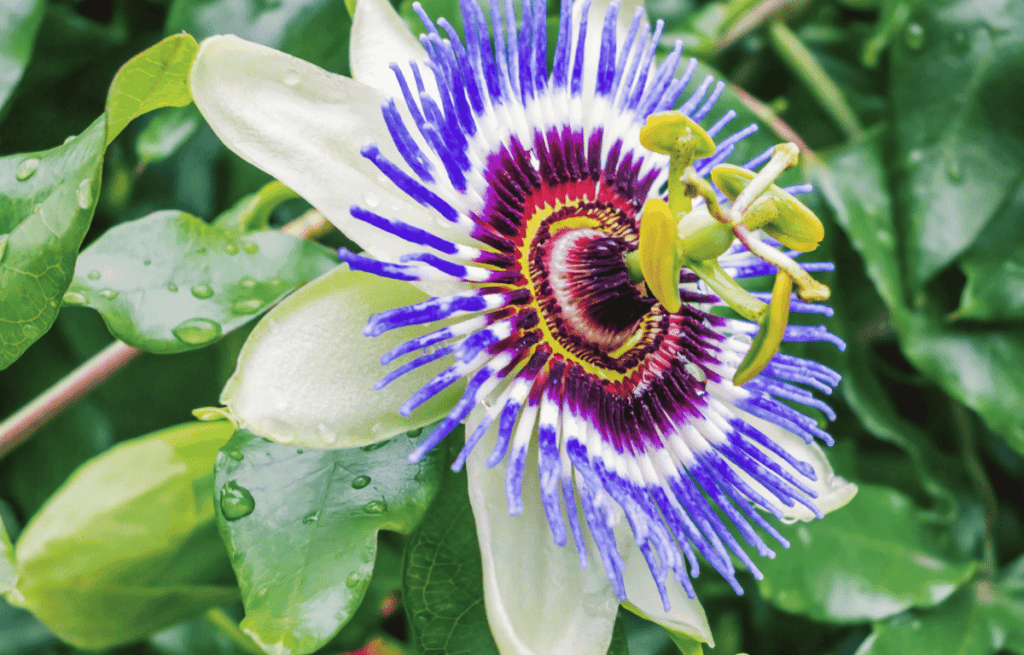
Disclaimer: I am providing a brief and general overview of common nervine herbs for educational purposes only.
References
1. Blankespoor J. The Healing Garden. Mariner Books; 2022.
2. Chevallier A. Encyclopedia of Herbal Medicine. Third. Penguin Random House; 2016.
3. De La Foret R. Alchemy of Herbs. Hay House Inc.; 2017.
4. Easley T, Horne S. The Modern Herbal Dispensatory: A Medicicne-Making Guide. North Atlantic Books; 2016.
5. Hoffmann, FNIMH, AHG D. Medical Herbalism – The Science and Practice of Herbal Medicine. The Healing Arts Press; 2003.
6. NCCIH. Passionflower. NCCIH. Published August 2020. https://www.nccih.nih.gov/health/passionflower
7. Rolland A, Fleurentin J, Lanhers MC, et al. Behavioural Effects of the American Traditional Plant Eschscholzia californica: Sedative and Anxiolytic Properties. Planta Med. 1991;57(3):212-216. doi:10.1055/s-2006-960076












